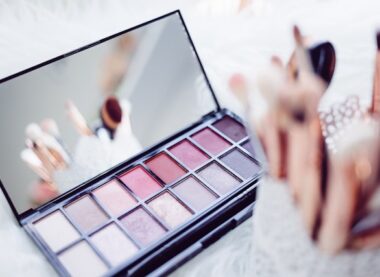Introduction
A well-tailored skincare routine is essential for achieving and maintaining healthy, radiant skin. However, the one-size-fits-all approach doesn’t work when it comes to skincare. Understanding your skin type and its unique needs is crucial for selecting the right products and creating an effective regimen. In this blog post, we will guide you through customized skincare routines for different skin types: oily, dry, combination, and sensitive skin.
Understanding Your Skin Type
Before diving into specific routines, it’s important to identify your skin type. Here’s a brief overview to help you determine yours:
- Oily Skin: Characterized by excess oil production, larger pores, and a shiny complexion. Prone to acne and blackheads.
- Dry Skin: Often feels tight and rough, with flaky or scaly patches. Lacks natural oils and may have a dull appearance.
- Combination Skin: Features both oily and dry areas, typically with an oily T-zone (forehead, nose, chin) and dry cheeks.
- Sensitive Skin: Easily irritated by products and environmental factors. May experience redness, itching, and inflammation.
Skincare Routine for Oily Skin
Cleansing:
- Use a gentle foaming cleanser twice daily to remove excess oil and prevent breakouts.
- Look for ingredients like salicylic acid to unclog pores.
Toning:
- Apply a toner with witch hazel or niacinamide to balance oil production and tighten pores.
Moisturizing:
- Opt for an oil-free, non-comedogenic moisturizer to hydrate without clogging pores.
- Gel-based moisturizers work well for oily skin.
Sun Protection:
- Choose a lightweight, mattifying sunscreen with SPF 30 or higher.
Additional Tips:
- Incorporate a clay mask once or twice a week to absorb excess oil.
- Use blotting papers throughout the day to manage shine.
Skincare Routine for Dry Skin
Cleansing:
- Use a creamy, hydrating cleanser that doesn’t strip natural oils.
- Avoid hot water, as it can further dry out your skin.
Toning:
- Choose a hydrating toner with ingredients like hyaluronic acid or glycerin.
Moisturizing:
- Apply a rich, emollient moisturizer immediately after cleansing to lock in moisture.
- Consider using a facial oil for added hydration.
Sun Protection:
- Use a moisturizing sunscreen with SPF 30 or higher.
Additional Tips:
- Exfoliate gently once a week to remove dead skin cells and allow better absorption of products.
- Incorporate a hydrating serum or overnight mask into your routine.
Skincare Routine for Combination Skin
Cleansing:
- Use a gentle, balancing cleanser that doesn’t over-dry or over-hydrate your skin.
- Gel or cream cleansers are suitable options.
Toning:
- Apply a toner that balances oil production in the T-zone while hydrating dry areas.
Moisturizing:
- Use a lightweight, non-comedogenic moisturizer in the morning.
- Apply a slightly richer moisturizer at night to address dry areas.
Sun Protection:
- Choose a broad-spectrum sunscreen with SPF 30 or higher that suits both oily and dry areas.
Additional Tips:
- Use different products for different areas if necessary (e.g., mattifying products for the T-zone, hydrating products for dry areas).
- Incorporate a gentle exfoliant once or twice a week to keep your skin balanced.
Skincare Routine for Sensitive Skin
Cleansing:
- Use a mild, fragrance-free cleanser to avoid irritation.
- Avoid harsh scrubbing or using hot water.
Toning:
- Choose an alcohol-free, soothing toner with calming ingredients like chamomile or aloe vera.
Moisturizing:
- Apply a gentle, hypoallergenic moisturizer to maintain the skin barrier.
- Look for products with ceramides or shea butter.
Sun Protection:
- Use a mineral-based sunscreen with zinc oxide or titanium dioxide, which are less likely to cause irritation.
Additional Tips:
- Patch test new products before applying them to your face.
- Avoid products with alcohol, fragrance, or harsh chemicals.
Conclusion
Finding the right skincare routine for your skin type can make a significant difference in your complexion’s health and appearance. Remember, consistency is key, and it might take some time to see results. Always be gentle with your skin, and don’t hesitate to seek advice from a dermatologist if you have persistent issues. Embrace your unique skin type, and tailor your routine to achieve the best possible results.




